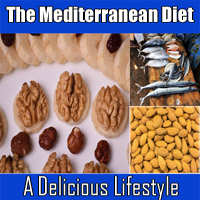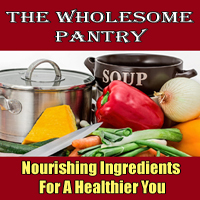


The Foundation Of A Healthy Body

Minerals are indispensable micronutrients that serve as the building blocks of a healthy body. Often overlooked in comparison to macronutrients like carbohydrates, proteins, and fats, minerals play an essential role in maintaining vital bodily functions. Understanding the significance of mineral content in our diets is key to nurturing optimal health and well-being.
The Crucial Role Of Minerals
Minerals are inorganic substances that our bodies require in relatively small amounts to function correctly. They serve as critical components in various physiological processes and contribute to overall health. Minerals are classified into two categories: macrominerals and trace minerals. Both types are essential, but macrominerals are required in larger quantities.
Macrominerals: The Body's Building Blocks
Calcium: Renowned for its role in bone health, calcium also aids in muscle function, nerve transmission, and blood clotting. Dairy products, leafy greens, and fortified foods are good sources.
Magnesium: This mineral is involved in hundreds of biochemical reactions, including energy production and muscle and nerve function. Magnesium can be found in nuts, seeds, and whole grains.
Sodium: Although excessive sodium can lead to health issues, it is essential for maintaining proper fluid balance, nerve function, and muscle contractions. Table salt is the most common dietary source.
Potassium: Working in concert with sodium, potassium is crucial for heart and muscle function. It can be obtained from sources like bananas, potatoes, and legumes.
Phosphorus: Phosphorus plays a central role in bone health, energy metabolism, and DNA formation. It's found in protein-rich foods, dairy products, and whole grains.
Trace Minerals: Small But Significant
Iron: Essential for transporting oxygen in the blood, iron can be found in red meat, poultry, and fortified cereals. Plant-based sources like lentils and spinach also provide iron, although it is less readily absorbed.
Zinc: Zinc is involved in immune function, wound healing, and DNA synthesis. It can be obtained from meat, dairy, and whole grains.
Selenium: An antioxidant mineral, selenium helps protect cells from damage. Brazil nuts, fish, and whole grains are good sources.
Copper: Copper supports the formation of red blood cells and connective tissues. It can be found in nuts, seeds, and seafood.
Iodine: Iodine is vital for thyroid hormone production, which regulates metabolism. Iodized salt and seafood are primary dietary sources.
Mineral Content And A Balanced Diet
A balanced diet that includes a variety of nutrient-rich foods ensures an adequate intake of essential minerals. Consuming a diverse range of fruits, vegetables, lean proteins, whole grains, and dairy products, if tolerated, is the best way to meet your mineral requirements. It's important to note that the bioavailability of certain minerals can be influenced by factors such as cooking methods and dietary components. For instance, the absorption of non-heme iron (found in plant-based foods) is enhanced when consumed with vitamin C-rich foods.
Minerals are the unsung heroes of a healthy body, supporting essential functions that are often taken for granted. By understanding the significance of mineral content in our diets and striving to maintain a balanced and nutrient-rich eating pattern, we can ensure that our bodies have the necessary building blocks to thrive. With a focus on minerals, we lay a solid foundation for overall health and well-being, empowering our bodies to function optimally and enjoy a vibrant life.
A Flavorful Journey From Field To Plate
 Freshness: Farm-fresh ingredients are harvested or prepared at the peak of ripeness. This freshness imparts exceptional flavor and nutritional value to the food.
Freshness: Farm-fresh ingredients are harvested or prepared at the peak of ripeness. This freshness imparts exceptional flavor and nutritional value to the food.
Proximity: The journey from the farm to your plate is short, minimizing the time spent in storage or transportation. This close proximity ensures minimal loss of flavor and nutrients.
Minimal Processing: Farm-fresh ingredients are minimally processed, if at all. They retain their natural state and are free from the additives and preservatives commonly found in processed foods.
Transparency: The origins of farm-fresh ingredients are often transparent. Consumers can learn about the farming practices, visit the farms, and connect with the producers. This transparency builds trust and strengthens the farm-to-table connection.
The Crucial Alchemy Behind Perfect Coffee
 The Roasting Machine
The Roasting Machine
Roasting coffee demands specialized equipment known as a coffee roaster. These machines come in various sizes and configurations, from small batch roasters for artisanal micro-roasters to large industrial roasters for mass production. These roasters are equipped with advanced controls to monitor temperature, airflow, and other variables.
The Roasting Process
Drying Phase: The roasting process begins with the drying phase. In this initial stage, the green coffee beans lose moisture and begin to change color from green to yellow. The beans become more brittle, and a grassy smell is often noted.
First Crack: As the roasting temperature continues to rise, the beans undergo a significant change known as the first crack.






A Blueprint For Healthful Eating
 Next Level: Whole Grains
Next Level: Whole Grains
Above the fruits and vegetables, whole grains take their place. These include staples like whole wheat, barley, oats, and brown rice. Whole grains are a source of complex carbohydrates and dietary fiber, providing a steady release of energy and supporting digestive health. They are also integral to Mediterranean dishes like whole wheat pasta and whole grain bread.
Healthy Fats: Olive Oil
The Mediterranean diet pyramid highlights the importance of healthy fats. At its heart is olive oil, often referred to as "liquid gold." Olive oil is the primary source of fat in this diet and is rich in monounsaturated fats, which promote heart health. It's used for cooking, dressing salads, and drizzling over dishes to enhance flavors and provide valuable health benefits.
Proteins: Legumes, Nuts, And Seeds
The next level of the pyramid includes plant-based protein sources, such as legumes (beans, lentils, and chickpeas), nuts, and seeds. These foods are rich in protein, healthy fats, and essential nutrients. They are vital for satiety and are an excellent alternative to red meat, which is consumed in moderation in the Mediterranean diet.
Dairy, Poultry, Eggs, And Seafood
Above the plant-based proteins, you'll find a section for dairy, poultry, eggs, and seafood. These are consumed in moderation, and the emphasis is on lean sources of protein like fish and poultry. Fatty fish, such as salmon and sardines, are particularly cherished for their omega-3 fatty acids, which support heart health.
Sweets And Red Meat: Occasional Indulgences
At the top of the pyramid, you'll find the smallest sections dedicated to sweets and red meat. These are considered occasional indulgences in the Mediterranean diet. The emphasis is on limiting consumption of sugary treats and red meat to maintain a balanced and healthful dietary pattern.
A Culinary Revolution For Busy Lives
 <The Simplicity Of One-Pot Meals
<The Simplicity Of One-Pot Meals
One-pot meals, as the name suggests, involve cooking an entire dish in a single pot or pan. This approach significantly simplifies the cooking process, making it accessible to everyone, from seasoned home cooks to kitchen novices. It's a game-changer for those with busy schedules, as it offers a shortcut to hearty, flavorful meals without the need for an arsenal of pots, pans, and utensils.
Why One-Pot Meals?
Here are a few compelling reasons why one-pot meals have become a staple in many households:
1. Time-Saving: One-pot meals are champions of efficiency. By combining ingredients in one pot, you reduce the time spent on food preparation and cleanup, making these dishes perfect for weeknight dinners.
2. Versatility: From pasta dishes and stir-fries to stews and casseroles, the range of one-pot recipes is astonishing. Whether you're in the mood for something hearty and comforting or light and healthy, there's a one-pot recipe to suit your cravings./p>
Health And Dietary Considerations
 Health Benefits
Health Benefits
For individuals with celiac disease or gluten sensitivity, adopting a gluten-free lifestyle is non-negotiable. Consuming gluten can lead to severe health consequences and discomfort. However, even for those without these conditions, there are potential health benefits to going gluten-free.
Some people report improved digestion, increased energy, and reduced gastrointestinal discomfort when they eliminate gluten from their diets. This could be attributed to the fact that many gluten-containing foods are also highly processed and high in refined carbohydrates. A gluten-free diet can encourage individuals to choose more whole and naturally gluten-free foods like fruits, vegetables, lean proteins, and legumes.
Potential Drawbacks
While the gluten-free lifestyle offers various benefits, it's essential to be mindful of potential drawbacks. A gluten-free diet can be challenging to maintain, as gluten is pervasive in many common foods. Additionally, gluten-free products can be more expensive, and some may lack essential nutrients like fiber and certain vitamins.
Cultivating A Healthier Planet And Society
 Local And Seasonal Sourcing: Sourcing food locally and seasonally is another fundamental aspect of the sustainable food movement. This approach is a response to the vast carbon footprint generated by long-distance food transportation. Choosing locally grown and seasonal ingredients reduces greenhouse gas emissions and supports local economies. It also encourages consumers to reconnect with the natural rhythms of their environment and to enjoy a diverse range of fresh, in-season produce.
Local And Seasonal Sourcing: Sourcing food locally and seasonally is another fundamental aspect of the sustainable food movement. This approach is a response to the vast carbon footprint generated by long-distance food transportation. Choosing locally grown and seasonal ingredients reduces greenhouse gas emissions and supports local economies. It also encourages consumers to reconnect with the natural rhythms of their environment and to enjoy a diverse range of fresh, in-season produce.
Reducing Food Waste: The sustainable food movement recognizes the global challenge of food waste. It calls for reducing waste at all stages of the food supply chain, from production and distribution to consumption. By preventing food from going to waste, we conserve resources, reduce the strain on landfills, and address issues of food scarcity and hunger.
Social Equity And Responsibility: Promoting social equity and responsibility is a core value of the sustainable food movement. It encompasses fair labor practices, food access for all, and the eradication of hunger. The movement seeks to eliminate disparities in access to nutritious, affordable food and strives for a world where food is a basic human right, not a privilege.
Healthy Eating: Healthy eating is a vital component of the sustainable food movement. It encourages a diet based on nutrient-dense, minimally processed foods. Sustainable food choices often align with healthier eating patterns, emphasizing fruits, vegetables, whole grains, and lean proteins. This approach not only supports individual well-being but also reduces the burden of chronic diseases on society.